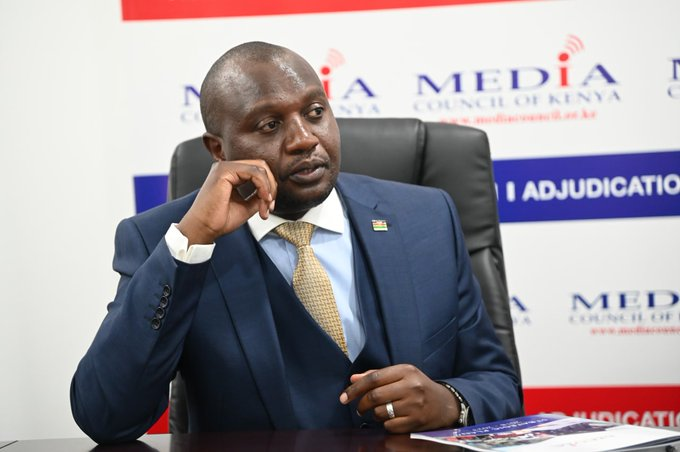The Media Council of Kenya has asked Parliament for Sh1.5 billion to set up an artificial intelligence-powered media monitoring system, warning that its current capacity is unable to effectively oversee the country’s expanding broadcast industry.
Appearing before the National Assembly Committee on Communication, Information and Innovation on Tuesday, Chief Executive Officer David Omwoyo said the council needs to strengthen its oversight function to cover all licensed outlets, including the growing number of vernacular television stations.
“The current media monitoring function, without significant enhancement, is demonstrably insufficient to effectively oversee all licensed media enterprises across the country,” Omwoyo told the committee. “This critical gap necessitates an urgent and strategic investment in an advanced media monitoring system capable of comprehensive and real-time coverage to ensure no licensed entity operates outside our ethical oversight,” he added.
He explained that the new system would make it possible to track unethical conduct in real time, particularly among vernacular broadcasters. At the moment, the council relies on 37 analysts to monitor all media houses and flag ethical breaches.
Lawmakers also heard that the industry is in deep financial distress, with 90 per cent of outlets unable to pay salaries or meet basic costs.
“Less than 10 per cent of the media houses are operating optimally, 90 per cent of the media houses cannot even pay their license fee and remit statutory deductions,” Omwoyo said.
He noted that some stations cannot settle their electricity bills, while many journalists go without pay.
He attributed the crisis to the unplanned growth of media houses in recent years. “We overcrowded the market sometimes because of excitement and political reasons. We rolled out the licensing without a clear policy. We have a lot of clearing to do,” he said.
Omwoyo gave the example of one community with nine clans that now has 42 vernacular TV stations. “In this place, there are more TV stations than the number of clans. It’s like each clan wants its own station,” he observed.
On press freedom, the council reported that 84 violations were documented across the country between January and September 2025. These included 56 incidents of physical assault, largely during anti-government protests and political activities.
Another 16 cases involved threats and intimidation, while eight involved censorship or denial of access to information. Three journalists were arrested and one was abducted during the same period.
The council’s data shows that police officers were behind most of the violence, with 65 journalists assaulted by security personnel. Hired gangs were responsible for 28 attacks, while 15 journalists were harmed by government officials at both national and county level.
Protesters accounted for three cases, while other incidents were linked to head teachers, politicians, a governor and a magistrate. Male journalists were more affected, with 65 cases compared to 19 against women.

